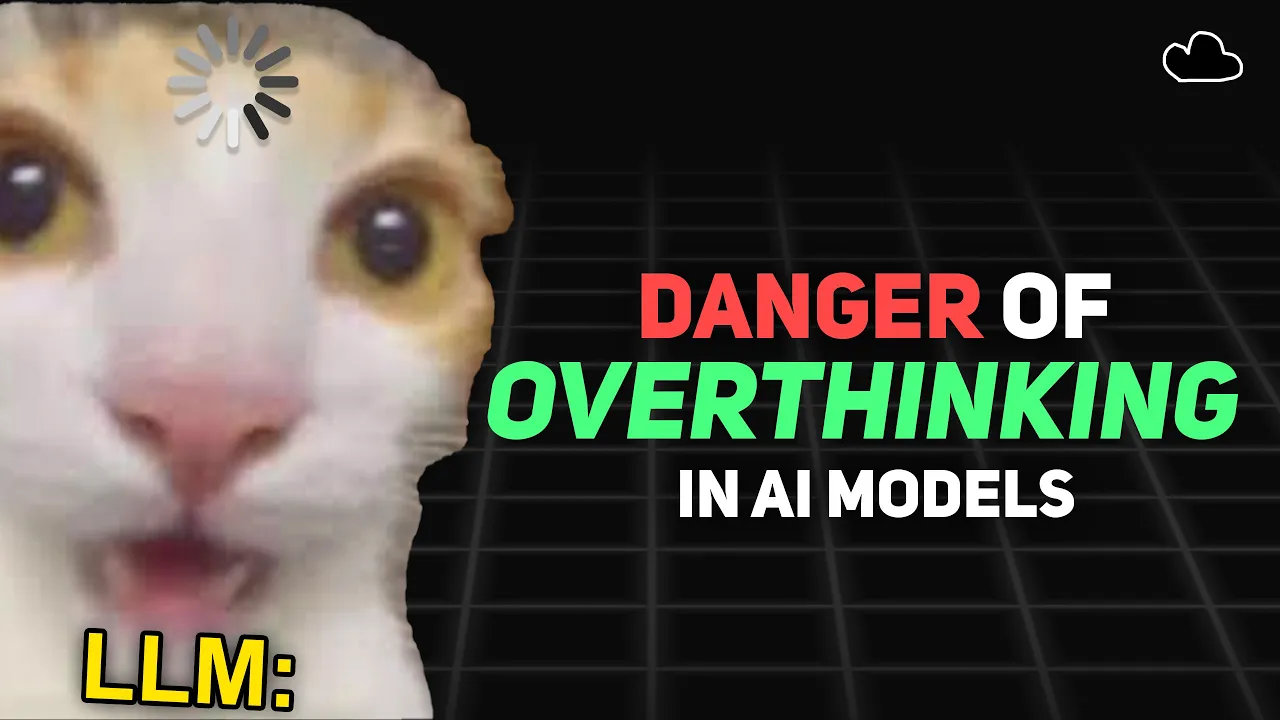
The AI research community has long struggled with teaching models to reason effectively. While various chain-of-thought methods have been developed, researchers are discovering that the key isn't creating external thinking frameworks, but helping models naturally learn reasoning processes from within. This shift in approach is revolutionizing how we manage artificial intelligence systems and their reasoning capabilities.
The Overthinking Problem in AI Reasoning
Just like humans, AI models can fall into the trap of overthinking. This creates inefficiencies and wastes computational resources without improving outcomes. According to recent research, reasoning models are prone to three distinct patterns of overthinking:
- Analysis Paralysis: Models get stuck in endless planning loops without taking action, often revising high-level plans without making progress or attempting to reason through problems where they lack the necessary factual knowledge.
- Rogue Actions: Models jump between multiple actions simultaneously without waiting for environmental feedback, leading to unpredictable and potentially harmful behavior.
- Premature Disengagement: Models give up early, relying solely on internal assumptions rather than checking external signals, similar to guessing a function's output without running the code.
Interestingly, smaller reasoning models tend to overthink significantly more than larger ones. This is likely due to their limited intelligence, making them struggle to effectively utilize reasoning tokens to navigate complex problems—similar to how a novice chess player might make more panicked moves than a grandmaster.

Three Methods to Combat AI Overthinking
Researchers have developed several promising approaches to address the overthinking problem in AI reasoning models:
1. Native Function Calling
This approach allows models to directly interact with their environments rather than endlessly hypothesizing internally. By making external function calls—like using a calculator for math operations instead of attempting calculations internally—models can avoid getting stuck in unproductive reasoning loops.
2. Selective Reinforcement Learning
Since most models don't have the computational power of advanced systems like Deepseek R1, they can't rely solely on self-discovery for effective reasoning. Selective reinforcement learning creates a balanced approach that combines thoughtful reasoning with decisive action-taking, helping models learn when to think and when to act.
3. High-Quality Data Selection
The quality of training data dramatically impacts reasoning abilities. Recent research demonstrates that using a small set of high-quality examples is far more effective than large quantities of mixed-quality data. In one study, researchers achieved impressive results by fine-tuning models with just 117 examples—only 1% of the data used in baseline approaches—leading to a 40.5% improvement in performance on out-of-distribution scenarios.

The Power of Less: Data Efficiency in AI Training
The concept of "less is more" is proving particularly valuable in AI reasoning development. By focusing on high-quality reasoning templates that serve as cognitive blueprints, models can learn more effectively—similar to studying 10 grandmaster chess games rather than 1,000 random matches.
Learning Impact Measurement (LIM) offers a systematic approach to quantifying which samples contribute most significantly to model improvement. Using this method, researchers have reduced necessary training data by approximately 84% while maintaining equivalent performance levels. This eliminates the need for manual sample curation and makes data selection more scalable.

Unsupervised Prefix Fine-Tuning: A Promising Frontier
An innovative approach called Unsupervised Prefix Fine-Tuning (UPFT) is showing remarkable potential. This method exploits the observation that when a model generates multiple solutions to a reasoning problem, the first few steps (the prefix) often look remarkably similar—a phenomenon called prefix self-consistency.
UPFT works by collecting these prefixes from the model's own generations and fine-tuning on just those segments without requiring human labels. This creates a self-improving cycle where the model learns from its own most consistent reasoning patterns.
The results are impressive: UPFT achieves comparable accuracy to supervised methods while reducing training tokens by up to 90%. It works particularly well on more difficult problems, suggesting a potential pathway for models to develop reasoning capabilities that eventually surpass human abilities.
Implications for AI Management and Development
These advancements in AI reasoning efficiency have significant implications for how we manage artificial intelligence systems. By addressing overthinking problems and implementing more efficient training methods, organizations can develop more capable AI systems while reducing computational costs and environmental impact.
For AI managers and developers, these findings suggest several practical approaches:
- Focus on curating high-quality training examples rather than maximizing data volume
- Implement methods to detect and prevent overthinking patterns in deployed AI systems
- Consider hybrid approaches that combine internal reasoning with external function calls
- Explore self-improvement techniques like UPFT that reduce dependence on human-labeled data
- Measure the impact of individual training examples to optimize data selection
Conclusion
The evolution of AI reasoning capabilities is moving away from external thinking frameworks toward helping models naturally develop effective reasoning processes. By addressing overthinking problems and implementing efficient training methods, we're creating AI systems that can reason more effectively while using fewer computational resources.
As these technologies continue to develop, we can expect AI systems that not only match but potentially exceed human reasoning capabilities in specific domains. The key will be balancing thoughtful analysis with decisive action—a challenge that both humans and AI systems must master.
Let's Watch!
Beyond Overthinking: 3 Breakthrough Methods for Efficient AI Reasoning
Ready to enhance your neural network?
Access our quantum knowledge cores and upgrade your programming abilities.
Initialize Training Sequence